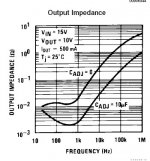Hey guys, can someone tellme ghe benefits of the use of an regulated vs an non-regulated PSU for an AMplifier?
regulated - higher quality, better performance, sometimes better efficiency
unregulated - simple, cheap, more common
unregulated - simple, cheap, more common
samsagaz said:Hey guys, can someone tellme ghe benefits of the use of an regulated vs an non-regulated PSU for an AMplifier?
http://myweb.tiscali.co.uk/nuukspot/decdun/gainclone6.html
Re: Re: Regulated or NonRegulated PSU.
Thanks too much, very good info, one question about the The Snubberized version, is possible to use just one transformer instead 2? if use just 1, will be bad?
yusuf said:
Thanks too much, very good info, one question about the The Snubberized version, is possible to use just one transformer instead 2? if use just 1, will be bad?
I assume single secondary instead of two. yes you can but design with be different. Two secondaries has only one advantage that you can use +ve regulator for -ve output.
Hi,
major disadvantages of regulated supplies include the following:-
extra cost of the regulator.
extra cost of the higher voltage transformer.
extra energy used to operate.
extra heat to be dissipated.
extra space to accomodate the reg and heatsink
design expertise required to ensure the regulated PSU operates correctly with the amplifer. (it is more complicated to design a good, well-behaved regulated supply than to design a discrete amplifier).
Advantages of unregulated PSU:-
cheap.
simple.
easy to assemble.
design expertise easy to find/acquire.
adequate performance that near enough matches and sometimes betters regulated.
A biased view, stick with unregulated and you won't regret it.
ps, don't bother with dual rectifiers. A single rectifier with dual capacitors for EACH amplifier. Share the transformer between channels but dedicate a PSU to every poweramp.
major disadvantages of regulated supplies include the following:-
extra cost of the regulator.
extra cost of the higher voltage transformer.
extra energy used to operate.
extra heat to be dissipated.
extra space to accomodate the reg and heatsink
design expertise required to ensure the regulated PSU operates correctly with the amplifer. (it is more complicated to design a good, well-behaved regulated supply than to design a discrete amplifier).
Advantages of unregulated PSU:-
cheap.
simple.
easy to assemble.
design expertise easy to find/acquire.
adequate performance that near enough matches and sometimes betters regulated.
A biased view, stick with unregulated and you won't regret it.
ps, don't bother with dual rectifiers. A single rectifier with dual capacitors for EACH amplifier. Share the transformer between channels but dedicate a PSU to every poweramp.
regulated not very easy in feedback.
Just use smps like crown ,unregulated and a lot of capacitance at output.The secret is the way to wind power trafo.
Just read Eva and N-channel advices about this.
Just use smps like crown ,unregulated and a lot of capacitance at output.The secret is the way to wind power trafo.
Just read Eva and N-channel advices about this.
IMO, regulated power supply should give you most out of your chipamp provided your regulated output in optimum for your input and output signal.
Any larger then optimum supply voltage on chipamp will reduce the driving capabilities of chipamp. It will also increase heat for same output. So if you have regulators with heat sink, that heat should be distributed between chipamp and regulator (excess voltage will be now across regulator and not on chip amp).
Again, that depends on voltage situation in your part of the world. Place I live has extremeley large variation and I would not go without regulated supply. However, if this is not the case with you, even unregulated supply may do for low variation. And offcourse, unregulated supply has its own benefits as Andrew mentioned above.
Yusuf
Any larger then optimum supply voltage on chipamp will reduce the driving capabilities of chipamp. It will also increase heat for same output. So if you have regulators with heat sink, that heat should be distributed between chipamp and regulator (excess voltage will be now across regulator and not on chip amp).
Again, that depends on voltage situation in your part of the world. Place I live has extremeley large variation and I would not go without regulated supply. However, if this is not the case with you, even unregulated supply may do for low variation. And offcourse, unregulated supply has its own benefits as Andrew mentioned above.
Yusuf
Hi
IMHO, if the amp is descrete and has a follower output stage, two power supplies can be used. One is unregulated, for the follower output, the other is bit higher voltage lower current to run the regulators and amp less the large follower collector/drain current. Smaller regulators are cheap and easier to implement, yet still able get the advantage of voltage regulation for the power amp. This may not be an option for chip amps though.

IMHO, if the amp is descrete and has a follower output stage, two power supplies can be used. One is unregulated, for the follower output, the other is bit higher voltage lower current to run the regulators and amp less the large follower collector/drain current. Smaller regulators are cheap and easier to implement, yet still able get the advantage of voltage regulation for the power amp. This may not be an option for chip amps though.


- Status
- Not open for further replies.
- Home
- Amplifiers
- Power Supplies
- Regulated or NonRegulated PSU.
